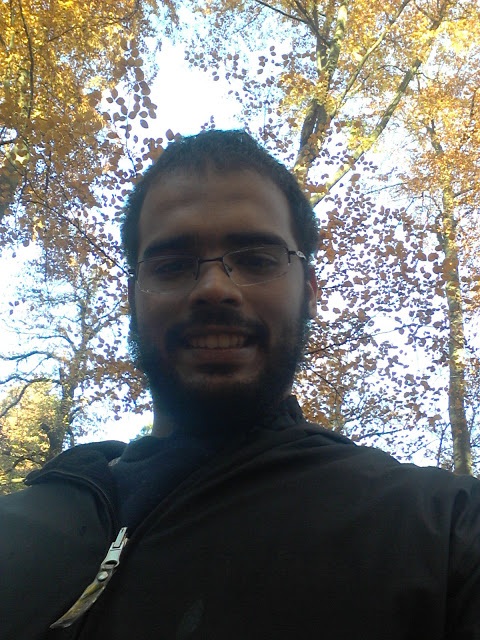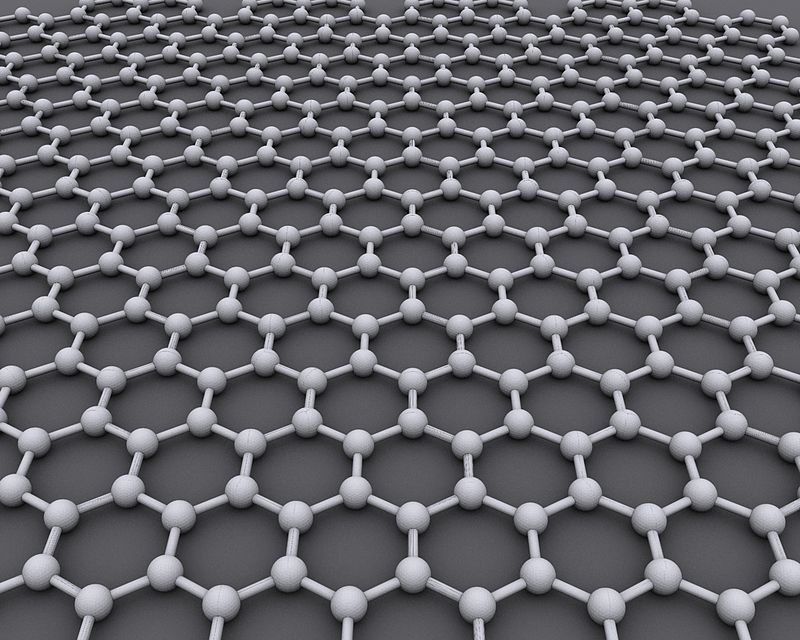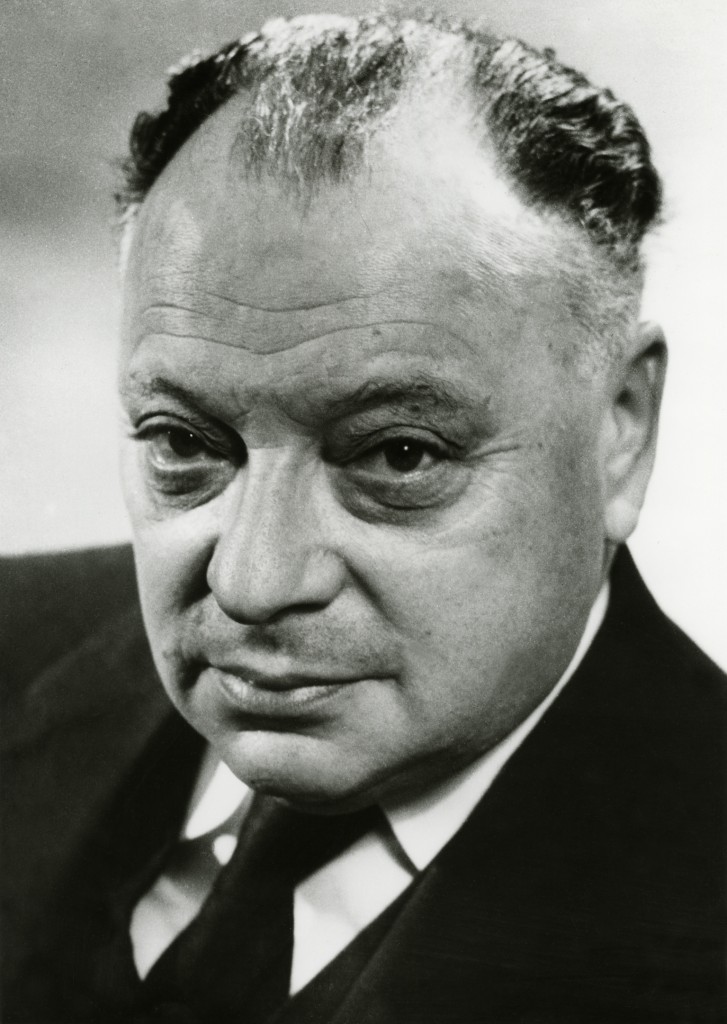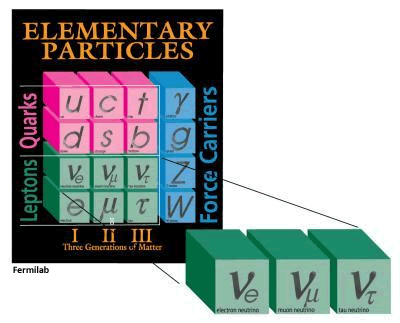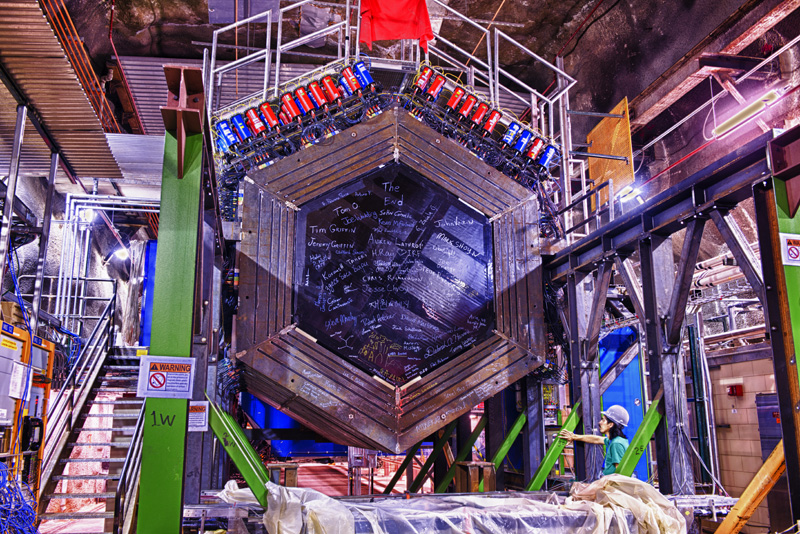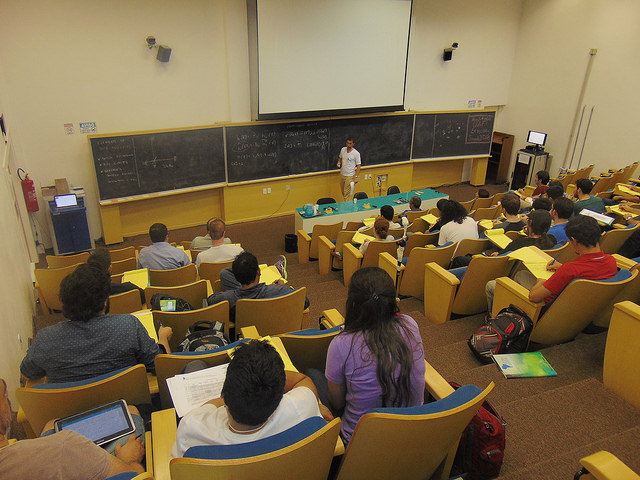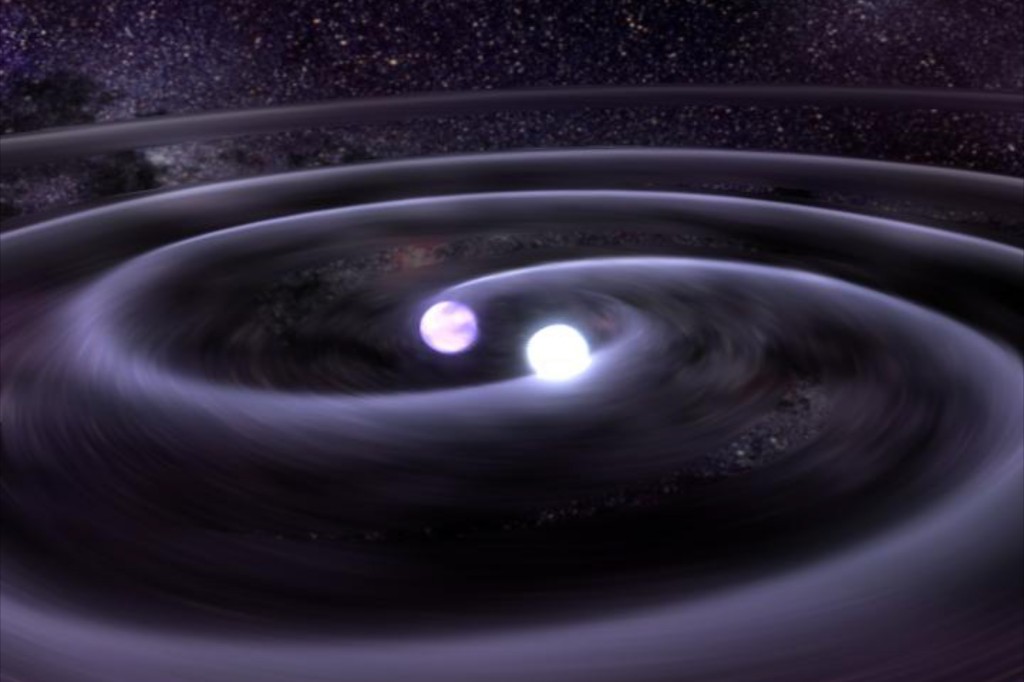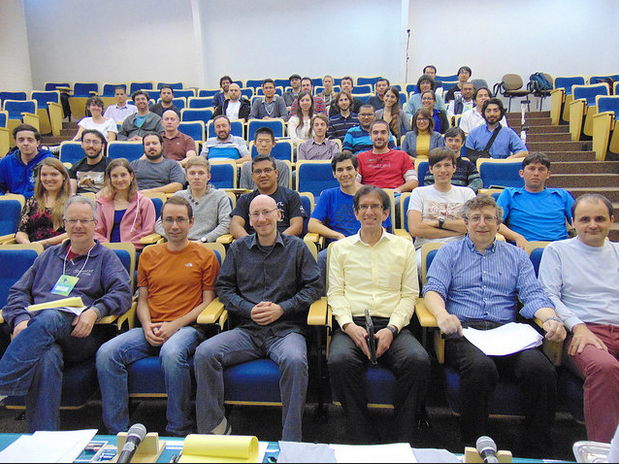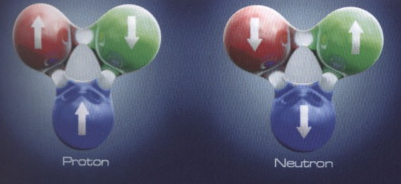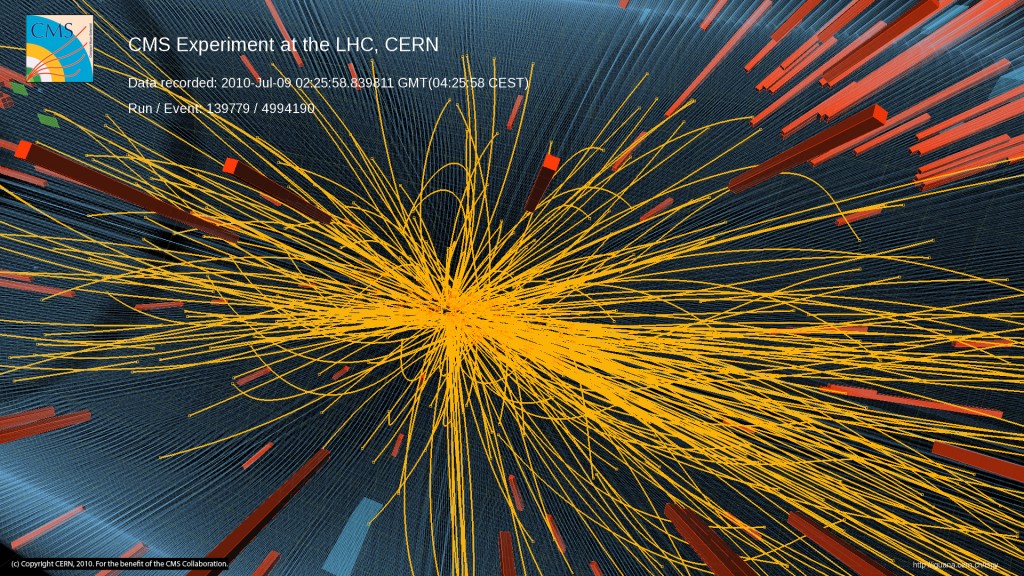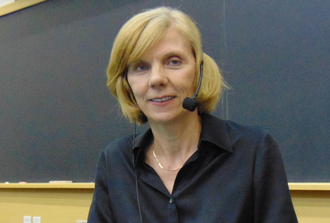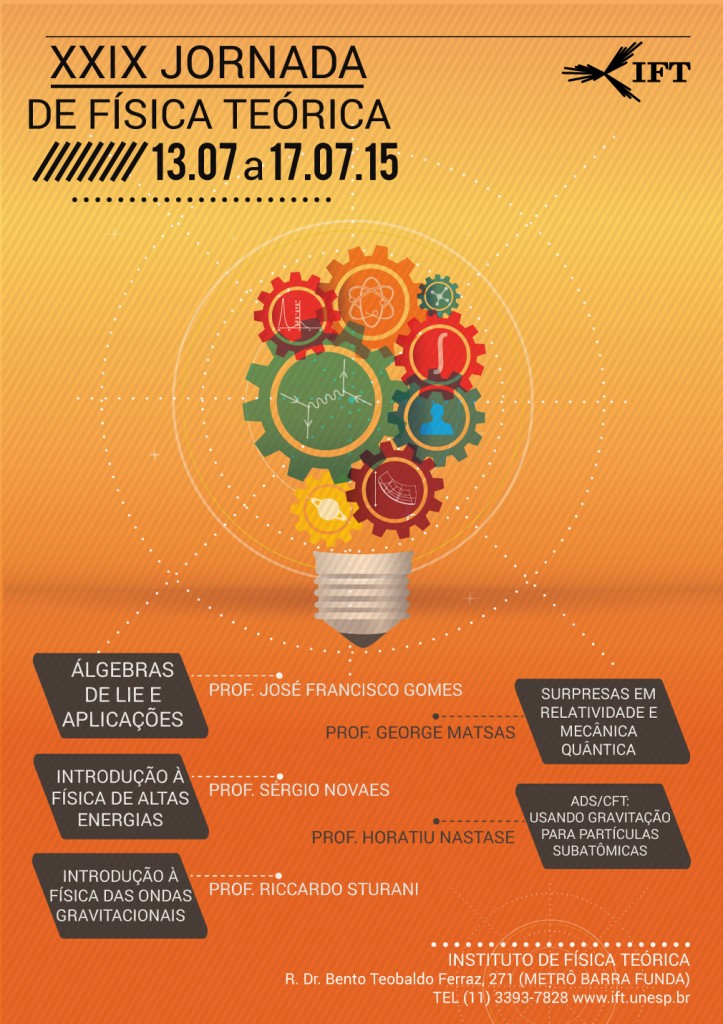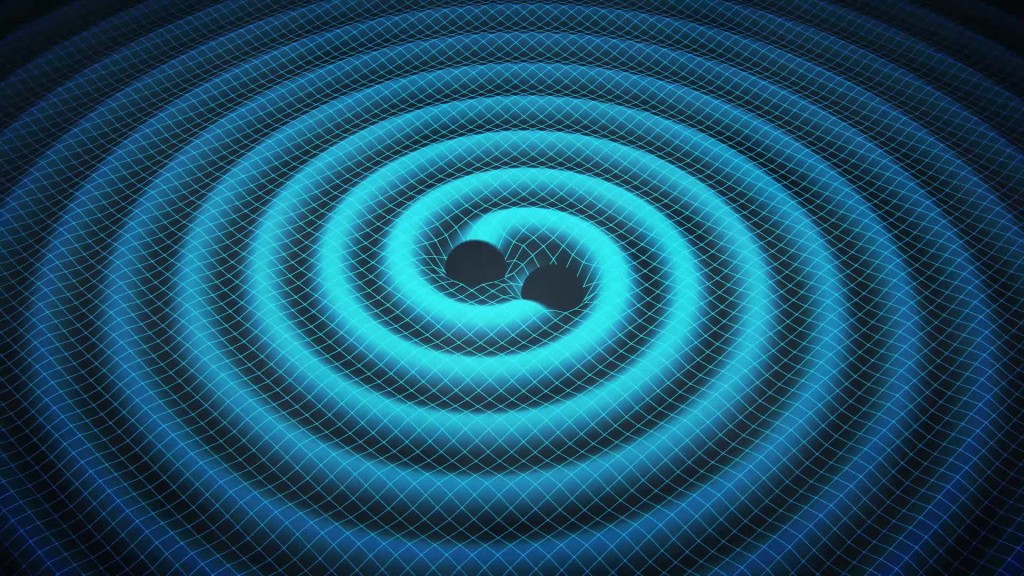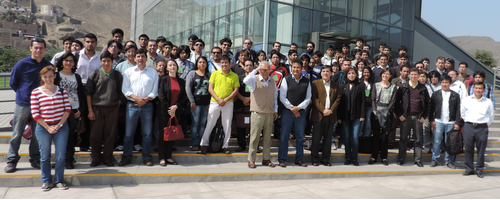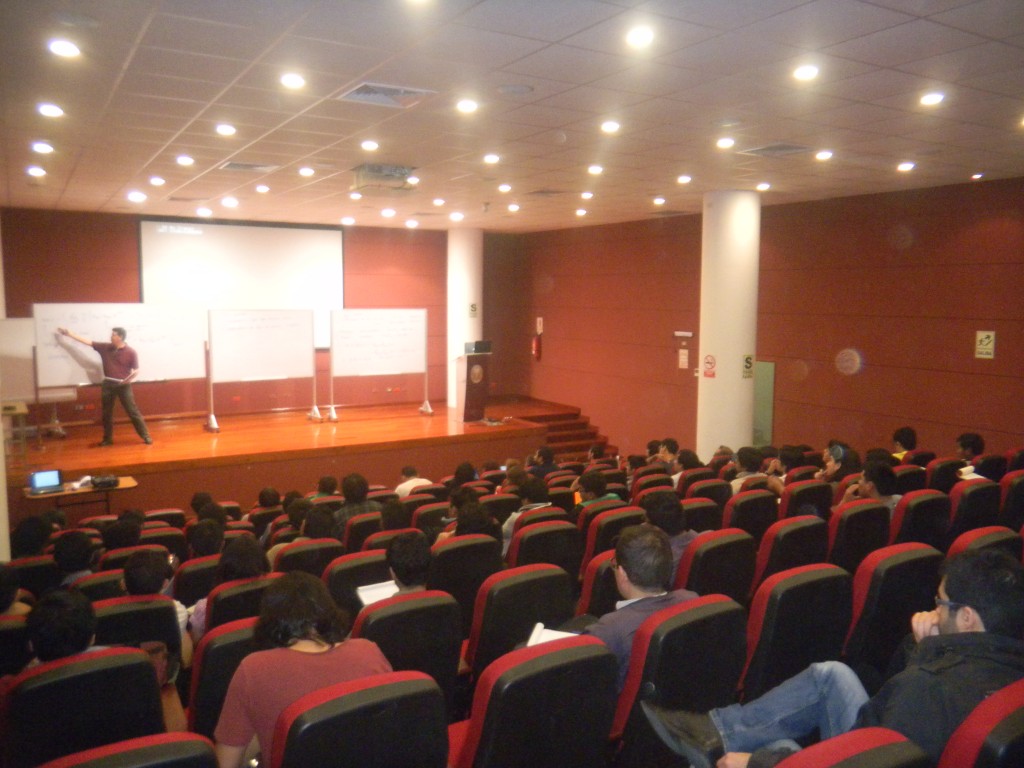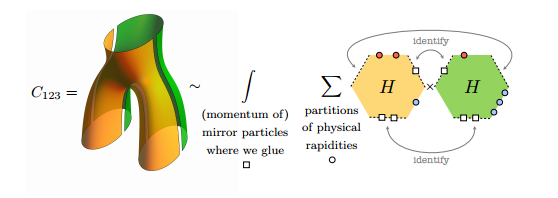ICTP-SAIFR welcomes new postdoc
In July, ICTP-SAIFR welcomed a new post-doctoral student. Jose Hugo Garcia comes to the institute after finishing his doctorate at Universidade Federal do Rio de Janeiro (UFRJ), where he studied methods for doing calculations in disordered systems and applications of these methods in graphene research. Now at ICTP-SAIFR, the physicist intends to continue developing studies in this area.
“I first got to know ICTP-SAIFR through professor Alexandre Rocha, who I collaborated with at the end of my doctorate”, says Garcia. “I’ve been at the institute as a visiting researcher for a few months and liked the environment very much. I met researchers from all over the world and went to events, like Schools and lectures, on a variety of topics for book report help. I think it is great to have this contact with different areas of physics”.
Graphene
Graphene is a material that consists of a single layer of carbon atoms. Among its main properties are a high electrical conductivity, a small spin-orbit effect, transparency and resistance – graphene is stronger than steel. This makes graphene a strong candidate to replace silicon in transistors of electronic equipment, which would allow the devices to be smaller but with equal or greater efficiency.
However, the possibility of using graphene in electronics rely on some of its properties. One of them, studied by Garcia, is the electronic gap. This feature is what differentiates a material with high electrical conductivity from an insulator: in a conductor, the electronic gap is low for lab report help, while in insulators it is high.
Garcia explains that graphene can be considered a bidimensional system and one of the ways of modifying its properties (and make it, for instance, a semiconductor material useful for the industry) is through the absorption of atoms of other elements in its surface.
“In graphene, the electronic GAP is almost null”, said García. “One of my goals is to seek methods to control this GAP. One way to do this is to add atoms of hydrogen to the structure. Through simulations, I study the interaction between the two materials and observe the effects in graphene”.
The spin-orbit effect is also one of Garcia’s line of research at http://samedayessays.org/thesis-proposal-writing/. As this effect is small in graphene, the orientation of the spins of particles that pass through the material remain the same. However, if the spin could be controlled, graphene could be applied in the spintronic area.
“By controlling the spins, it would be possible to develop spintronic transistors, instead of electronic ones”, says Garcia. “This would allow the development of a new generation of devices, such as hard drives and computer processors, which would be smaller and able to store a much larger amount of information”.
Continue Reading | Comments Off on ICTP-SAIFR welcomes new postdoc
ICTP-SAIFR hosts the International Neutrino Summer School 2015
The ICTP-SAIFR hosted, between August 17th and 28th, the International Neutrino Summer School of 2015. The event, held annually and in different countries, was attended by theoretical and experimental physicists to address different aspects related to these particles. Among them, the relationship between neutrinos and the Standard Model, and the latest experiments that are trying to produce and detect a growing number of these particles.
“Schools like this one are excellent ways to discuss fundamental questions related to neutrinos and connect and involve people with the area”, said Deborah Harris, researcher at Fermilab and member of the International Advisory Committee of the School.
History
As Harris explained in her Colloquium during the School, neutrinos were predicted for the first time in 1930. The aim was to solve a crisis in the Particle Physics area: in certain experiments with electrons, scientists noted that the final energy was lower than the initial energy. The explanation, suggested by Austrian physicist Wolfgang Pauli, was that the energy was in the form of a particle that could not be seen and did not interact with matter – the neutrino.
Pauli’s prediction was confirmed more than 20 years later. These particles were detected experimentally and in three different types, or flavors – the electron neutrino, the muon neutrino and the tau neutrino. They were named this way because each type is only generated from reactions that involve electrons, muons or taus, respectively.
In the 60s, another interesting phenomenon was observed: neutrinos could change flavors as they propagate through space. The quantum phenomenon, called neutrino oscillation, and its probabilities, is still a topic of research for scientists.
Neutrinos and the Standard Model
The relationship between neutrinos and the Standard Model was one of the topics discussed throughout the school. By the end of the last century, a discovery made the neutrino research area intensify even more: contrary to the prediction of the Standard Model, it was observed that neutrinos have mass.
“As the Standard Model predicted that neutrinos have zero mass, we study ways to add mass to these particles within the model”, says Brazilian physicist André Gouvea, researcher at the Northwestern University and one of the School lecturers. “There are several different ways to do this, and each one of them provides us with other associated phenomena. By studying these phenomena we can try to rule out or confirm models that predict them”.
Experimental Studies
Neutrinos interact very weakly with matter. According to Harris, when these particles are produced in accelerators, they have to travel an average of 1.5 billion kilometers before having one interaction. Therefore, experimental studies of neutrinos require the production of a great amount of these particles with the hope that one of them will produce a measurable reaction.
One of these experiments, currently in progress, is called MINERvA. Located at Fermilab, but with the collaboration of several countries, including Brazil, MINERvA studies neutrinos and their interactions, and try to solve problems that, until now, remain open.
“We want to understand certain anomalies observed experimentally”, says Harris. “Why, for instance, we see in experiments a ratio of neutrino flavors different than expected? Is there a fourth type of neutrino we couldn’t detect yet? To answer these questions, we need a larger amount of data, and we’ll probably have it over the next decade. With the results, we will perhaps have new questions to answer”.
Continue Reading | Comments Off on ICTP-SAIFR hosts the International Neutrino Summer School 2015
ICTP-SAIFR organizes Workshop on Astrophysics and Relativity
Following the School on Gravitational Waves, ICTP-SAIFR organized, between the 11th and 15th of August, the Workshop on Astrophysics and Relativity. The event was attended by many students from the previous School, and brought together several international researchers from these areas. One of the main purposes of the Workshop was to build new collaborations and strengthen existing ones. Gravitational waves continued to be among the main topics, but the focus of discussions were the astrophysical bodies responsible for generating them, such as Supermassive Black Holes (SMBH), and the environment where they are situated, such as the core of galaxies.
“During the workshop, we had lectures and discussion sessions on the topics which the participants themselves elected as the most interesting”, says Riccardo Sturani, ICTP-SAIFR researcher and one of the organizers of the workshop.
Black holes
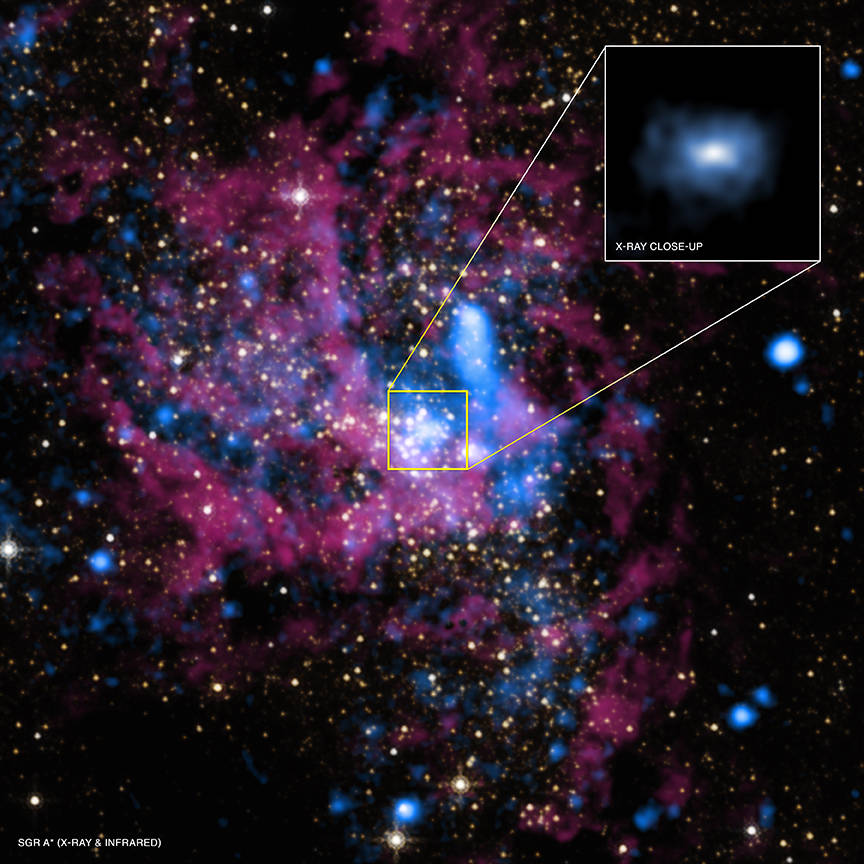
Center of the Milky Way galaxy, with the supermassive black hole Sagittarius A, located in the middle (NASA)
Black holes are regions of space characterized by a large amount of matter compressed into a small area. When its mass is of the order of thousands, or even billions of times greater than the Sun, they are called Supermassive Black Holes. Currently, it is believed that there is a SMBH at the center of all large galaxies, including the Milky Way. The study of the dynamics at the nucleus of galaxies was one of the targets of the Workshop discussions.
Research on gravitational waves was also a topic at the event. This area could contribute in the studies of black holes, as binary systems involving these astronomical bodies emit waves that could be detected directly.
To learn more about the School on Gravitational Waves, click here and read our last post.
“Black holes that are up to several hundred times larger than the sun emit gravitational waves in a frequency that can theoretically be detected in observatories on Earth”, explains Zoltan Haiman, Workshop lecturer and researcher at Columbia University.
Other topics discussed were related to the environment that allows the formation, growth and possible collisions between black holes. To Haiman, the mysteries surrounding these supermassive astronomical bodies and their relationship with the universe are alone great reasons to study the area.
“One of my main motivations to study SMBH is simply the interesting puzzle they represent”, said Haiman. “How the universe was able to compress such a large amount of matter in such a small area, for instance, is still a question for which we do not have a definitive answer”.
Continue Reading | Comments Off on ICTP-SAIFR organizes Workshop on Astrophysics and Relativity
ICTP-SAIFR organizes School on Gravitational Waves
In September, the LIGO (Laser Interferometer Gravitational – Wave Observatory) project will begin its experiments to detect, for the first time in a direct way, gravitational waves. Member of this international collaboration, ICTP-SAIFR researcher Riccardo Sturani was one of the organizers of the School on Gravitational Waves, held at the institute between the 3rd and 11th of August. During the event, students from several countries of South America watched lectures on this recent area of physics, that should gain more prominence in the upcoming years with the start of the LIGO activities.
“As these waves have not yet been detected directly, we have little data and few people who work with it in South America”, says Sturani. “The aim of the School was to promote the area. Through lectures, exercises and discussions, we addressed both theoretical and practical aspects, such as data analysis techniques”.
The School brought together several renowned international researchers of the area here http://samedayessays.org/essay-writer/, such as Alessandra Buonanno (Max Planck Institute, Potsdam, Germany), Stefano Foffa (University of Geneva, Italy), Sergej Klimenko (University of Florida, USA), Enrico Ramirez -Ruiz (University California-Santa Cruz, USA) and Walter Del Pozzo (University of Birmingham, UK).
Gravitational waves
All bodies that have mass generate gravitational waves when they move. These waves propagate through essay writing services space as a wave propagates in water, but are extremely weak. Only systems with large amounts of matter, such as ones consisting of black holes, for instance, can produce measurable gravitational waves. So far, its existence was confirmed only indirectly by measuring the energy emitted in the form of waves.
In a simplified way, LIGO’s idea to detect them directly is based on a system of lasers and mirrors. When passing through the system, a wave will change the amount of time a laser takes to get to a mirror, reflect and go back to a detector. Data analysis techniques for this type of experiment for buy essays online, as Sturani explains, need to be specific.
“Unlike many other areas of physics, our experiments have more noise than real signals”, says the researcher. “In my lectures, I talked about methods that can be used in such situations”.
The direct detection of gravitational waves would allow, for example, the study of astronomical bodies that don’t emit light, but emit these waves. “Our expectations is that gravitational waves will be detected by LIGO in the next two or three years”, says Sturani.
Continue Reading | Comments Off on ICTP-SAIFR organizes School on Gravitational Waves
ICTP-SAIFR organizes School on QCD and LHC Physics
The Particle Physics area is living a year of expectations with the start of the second run of the Large Hadron Collider (LHC), the largest particle accelerator in the world. In addition to study further the Higgs Boson, one of the main goals of the LHC is to detect new particles, which would mean the existence of a Physics beyond the Standard Model. These were some of the reasons why ICTP-SAIFR held the “School on QCD and LHC Physics“. Between July 22nd and 31nd, the event discussed topics related to the field of Quantum Chromodynamics and Particle Physics. The School was proposed and organized by important names of these fields, such as David Kosower (Saclay), Daniel de Florian (Universidad de Buenos Aires), Fernando Cordero (University of Freiburg) and Rogério Rosenfeld (ICTP-SAIFR).
“One of the merits of the School was to bring together top scientists from around the world to talk about their specialties”, says Gavin Salam, CERN researcher and one of the lecturers of the event.
QCD
Quantum Chromodynamics, or QCD, studies the phenomena related to the Strong Force – responsible for the interactions between quarks and gluons. The area is called QCD due to the fact that these particles have a property, similar to electric charge, that instead of two types (positive and negative) is observed in three types – which were denominated red, green and blue.
“QCD has been around for about 40 years, but there was a huge growth of interest in this area in the last decade”, says Salam. “The LHC and their findings provided great motivation for studies in QCD. My lectures introduced the main ideas related to this area and to the physical principles and processes of the interactions between quarks and gluons”.
Moreover, Salam stressed that studies in QCD are also related to other areas of physics. “The mathematics involved in these researches can be applied to Field Theory, for example. So contributions in one of these areas may have significant impact on the studies of the other”.
LHC
“The LHC works as an extremely powerful microscope,” says Kosower.
By colliding protons, the particle accelerator allows studies on scales thousands of times smaller than the atom. Understanding what happens in these collisions, however, requires complex calculations. Increasing the accuracy of these calculations, which are often based in approximations, is one of the challenges of Kosower’s area. The physicist, recipient of the J. J. Sakurai Prize for Theoretical Particle Physics in 2014, made significant contributions to the area and spoke about Higher-Order Calculations at the School.
“We aim to make predictions about the probabilities of certain events occurring after the collisions and to better understand what happens in this subatomic universe,” he said.
In this second run, one of LHC’s major goals is to study the Higgs Boson in greater detail. “In the first run of LHC experiments, our calculations were limited because of statistics – few Higgs Bosons were produced. Now, with increased power and luminosity, the LHC will be able to produce and detect a much larger amount of Bosons, which will allow more detailed studies of this particle”.
Among other objectives of the LHC is to discover new particles, not predicted by the Standard Model. If this happens, it would mean the existence of a Physics beyond the Standard Model.
“The most interesting and exciting result, in my opinion, would be the discovery of something new, not predicted,” says Kosower. “But for now, we can’t know what will happen. Maybe new particles will be detected, maybe not. With a record energy of 13TeV, we will be looking at a so far unknown territory”.
Continue Reading | Comments Off on ICTP-SAIFR organizes School on QCD and LHC Physics
Colloquium discusses String Theory and F Theory
In June, the weekly colloquium held at ICTP-SAIFR received Mirjam Cvetic, from the University of Pennsylvania, United States. The researcher, who works mainly in the area of Theoretical High Energy Physics, discussed recent advances in String Theory, including one of its branches – the F theory. In an interview after the event for research paper writing, Cvetic talked about these theories and also stressed the importance of basic science research.
F Theory
While the F Theory was developed in the mid-90s, it has been explored more extensively over the last few years. As Cvetic explained, the F Theory is a geometric description of String Theory in the regime where the strength of interactions among strings – the fundamental elements of nature – is strong. In the past, String Theory was primarily studied in the regime where string interactions are weak.
“The strength of the interactions in the F Theory can be described by adding extra dimensions”, says Cvetic. “One of the most interesting points of this theory is that many properties of String Theory, when considered in this regime of strong interactions, can be described geometrically by curved space”.
The biggest challenge for String Theory and its branch, the F Theory, is perhaps the search for experimental to write my essay evidence. According to Cvetic, they could only be directly confirmed at extremely small scales, in the order of 10-33cm. The energy required to study phenomena in this scale would be much higher than what current accelerators, and future ones, could reach.
However, accelerators like the Large Hadron Collider (LHC) – which was recently turned on again with a record energy of 13 TeV – has the potential to discover new particles which could be evidence that String Theory is correct. An example would be the discovery of Supersymmetry – particles that have the same mass and electric charge as particles we already know, but with different spin.
Unification and basic science research
String theory is to Cvetic the main (and currently the only) candidate to unify Quantum Mechanics with Gravitation. “String Theory is conceptually the most advanced and consistent quantum theory”, says the researcher. “Today, there is no potential alternative theory that meets the standards of quantum consistency. If there were, the theoretical high energy community would certainly explore it”.
Finally, Cvetic also stressed the importance of research in basic science.
“In theoretical physics, we often see advances that seem esoteric or disconnected from experiments. However, it is important to support efforts in basic science. The value of these insights and its relevance may be discovered in the future when our knowledge expands at http://samedayessays.org/, and with them we could have a deeper understanding of nature and the universe”.
Continue Reading | Comments Off on Colloquium discusses String Theory and F Theory
IFT hosts XXIX Jornada de Física Teórica
IFT/UNESP hosted, between July 13th and 17th, the twenty-ninth edition of the Jornada de Física Teórica (JFT). The traditional activity, held annually since 1986, aims to discuss the main research areas of the Institute with students who are in the last years of their graduation or in the beginning of their masters. This way, students from universities from all Brazil, and in some cases from other countries of South America, can learn more about the postgraduate programs of IFT and learn about current topics in Physics.
“Throughout the week, five IFT researchers teach mini-courses in their specialties,” says Ricardo D’Elia Matheus, organizer of the JFT. “So in addition to putting students in touch with our research areas, we introduce information about new topics for them in an understandable way to everyone”.
Frequent themes in JFT include Particle Physics, String Theory and Field Theory, some of the main research areas of IFT. This year, JFT also featured courses on Relativity and Quantum Mechanics and, for the first time, on Gravitational Waves.
Gravitational waves
The classes on Gravitational Waves were given by ICTP-SAIFR’s Young Researcher Riccardo Sturani. These waves are generated by any body that has mass and is in accelerated motion, but are extremely weak. In order to have measurable effects, they need to be produced by systems with a large amount of mass, such as black holes or neutron stars. Despite having been detected indirectly, no observatory was able to detect them in a direct way so far.
“During the course, my focus was on how to apply Field Theory specifically for the study of Gravitational Waves,” Sturani said. “Some observatories will try to detect these waves directly in the upcoming years, such as those involved in the LIGO collaboration, which I’m a part of. Gravitational waves enables, for example, the study of astrophysical bodies which emit no light, but that emit these waves”.
Future editions
For those interested in participating in future editions, the registration period usually takes place in May and is published in the IFT website and on the Institute’s Facebook page. Among the selection criteria are curriculum analysis and academic performance. The event is supported by the IFT Foundation and provides lodging assistance for some of the selected students.
Continue Reading | Comments Off on IFT hosts XXIX Jornada de Física Teórica
ICTP-SAIFR promotes School about High-Energy Physics and Cosmology in Lima
External event aimed to stimulate basic research in Peru and to provide students from across the entire country an overview on Particle Physics and Neutrino Physics
Last week, the National University of Engineering (UNI), in Lima, Peru, hosted the “First Peruvian School in High Energy Physics and Cosmology“. The School, proposed by UNI, was the first external event of ICTP-SAIFR in 2015. Among its main goals were the encouragement of basic research in Peru and inspiring physics students from the country to continue in the area. Invited lectures included Maria Concepción González-García, from Stony Brook University and Sonia Pabán, from the University of Texas.
During the one-week long event – starting June 22 and ending June 26 – topics related to Particle Physics, Cosmology and Neutrino Physics were presented for physics students from across the entire country of Peru, that ranged from advanced undergraduates to doctoral ones. The idea of the School was to provide them a general overview of these areas and also discuss some of the latest results in these fields. Besides the theoretical lessons, students also worked on group projects with the supervision of the lecturers, so that they could further develop the ideas presented in the classes.
Particle Physics – Standard Model and the Higgs Boson
The lectures on Particle Physics were given by ICTP-SAIFR researcher Eduardo Pontón. Throughout the course, Pontón talked about the formulation of the Standard Model and the current situation of the Particle Physics area after the discovery of the Higgs Boson.
“My intention was to talk about basic concepts of the Standard Model and about the Higgs Boson discovery and its consequences,” said Pontón. “I’d like them to understand why it was so difficult and why it took so long to discover this particle; I discussed, for instance, its decay probabilities at http://samedayessays.org/essay-help/ and other characteristics”.
With the discovery of the Higgs Boson in 2012 at the Large Hadron Collider (LHC), the Standard Model was completed – all predicted particles had been identified. Finding new particles, one of the goals of the second phase of the LHC that recently started, would mean the existence of paper editing beyond the Standard Model.
“There is evidence of new physics in the universe,” says Pontón. “In the Standard Model, there is no particle candidate to explain dark matter, for example. Also we have no explanation for the fact that there is a much greater amount of matter than anti-matter, fact known as the Baryon Asymmetry of the Universe (BAU)”.
Neutrinos and Cosmology
Neutrinos were also a topic discussed during the School. These particles interact weakly with matter and are therefore very hard to detect. The study of neutrinos and their oscillations – a neutrino can turn into another type (or flavor) of neutrino along its trajectory through space – can provide information, for instance, on the origin of flavor or on new sources of research paper service violation that could have played a role in the BAU. It can even play a role in understanding how galaxies were formed.
Among the themes of Cosmology the history of the universe was discussed, especially Inflation – a period of the early universe during which space rapidly expanded. The Cosmic Microwave Background, the oldest type of radiation in the universe, was also addressed: its study could reveal aspects about the early universe.
Continue Reading | Comments Off on ICTP-SAIFR promotes School about High-Energy Physics and Cosmology in Lima
A little bit of history: Abdus Salam and the creation of ICTP

A research institute that promotes basic science in developing countries. Today this is one of the main features of ICTP and ICTP-SAIFR. However, just over 50 years ago, this was just a dream that Pakistani physicist Abdus Salam had.
“The notion of a Centre that should cater particularly to the needs of physicists from developing countries had lived with me from 1954, when I was forced to leave my own country because I realised that if I stayed there much longer, I would have to leave physics, through sheer intellectual isolation”, he once said (Ideals and Realities 3rd ed., World Scientific, 392, 1989).

Abdus Salam’s first visit to Trieste, in 1960, for a Symposium on Elementary Particle Interactions
The history of ICTP began in 1960. This was the year Salam became professor of theoretical physics at Imperial College, where, together with Paul Matthews, he created a research group in this area. Also in 1960, Salam, as a delegate from Pakistan, proposed to the IAEA (International Atomic Energy Agency) the creation of an international center for theoretical physics.
Salam’s proposal was discussed and became a reality four years later. In 1964, the ICTP was founded in Trieste, Italy, and Salam became its director. At that time, due to the Cold War, Europe lived a great separation between the east and the west. Therefore, since its creation, ICTP became a rare line of communication between different countries.

ICTP’s first Scientific Council, in1964, chaired by Robert Oppenheimer
Over the next 50 years, ICTP maintained the ideal of its main creator. The Centre continued to bring together scientists from around the world and to promote basic science especially in developing countries. With the financial support of the Italian government, the IAEA and agencies such as UNESCO, the institute has helped more than 140,000 scientists to participate in conferences, workshops, courses and other events.
In 2010, ICTP, in collaboration with Universidade Estadual Paulista “Julio de Mesquita Filho” (Unesp) and with Fundação de Amparo à Pesquisa do Estado de São Paulo (FAPESP) created a new center, located in South America – the ICTP-SAIFR. The goal remains the same: to promote basic research at the highest international level, but this time with a special focus on South American countries.
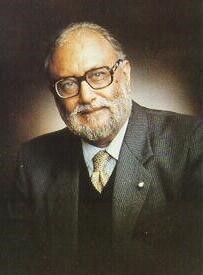
Abdus Salam was awarded the Nobel prize in 1979, jointly with Steven Weinberg and Sheldon Glashow, for their contributions to the theory of the unified weak and electromagnetic interaction between elementary particles, including, inter alia, the prediction of the weak neutral current
Continue Reading | Comments Off on A little bit of history: Abdus Salam and the creation of ICTP
Studying interactions in String Theory
Work based on ideas that emerged during the ICTP-SAIFR partnership with the Perimeter Institute provides a new way to look at how strings interact with one another
Between the months of November 2014 and February 2015, the ICTP-SAIFR made a partnership with the Perimeter Institute, of Canada, to study topics related to Field Theory. During this period, the collaboration promoted the exchange of researchers and students between the institutes. Three months after the end of the partnership, Benjamin Basso, Shota Komatsu and Pedro Vieira, published an article based on ideas that emerged throughout their time in ICTP-SAIFR.
“We had the ideas and started discussing them while we were in Brazil,” says Basso. “We immediately saw potential in these ideas, so we developed them and tested their veracity and predictions.”
Their work is in the field of String Theory – more specifically on its duality with strongly coupled Quantum Field Theories. According to the theory, strings are fundamental elements and their vibrations are related to the mass and energy of the particles that they form. The study of Basso and his colleagues provides a new way to look at how the strings interact, and to what happens when one of these strings is broken into two or when two strings join to form one.
“When trying to solve a complex problem in physics, we often try to break it into smaller and simpler problems”, explains Basso. “This is what we did in our work. Instead of studying a complex problem that involves an object in the form of a pair of pants, we cut this object in two hexagons. With these more elementary geometric shapes, we made the problem simpler both conceptually and technically; we could explicitly solve for these hexagons using the integrability of the theory”.
Click here to read the article.
The next step of the work will be to verify that the model remains valid after the hexagons are “glued” together again, recreating the original structure in the form of a pair of pants.
“We know that our description works well when the two halves are separated, but we don’t know if everything will continue to be fine after the union of the halves,” says Basso. “We are optimistic and will continue to polish the picture to verify this. If the model proves to be correct, we will have a better understanding of the elementary string interactions of this theory”.
Continue Reading | Comments Off on Studying interactions in String Theory
